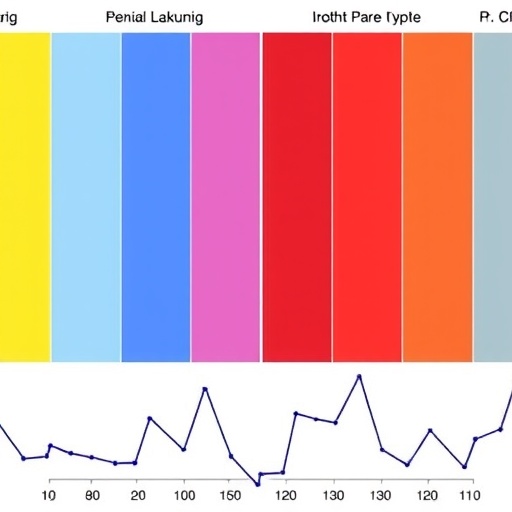Boston, MA — In an era where precision medicine is rapidly evolving, a groundbreaking advancement from researchers at the Dana-Farber Cancer Institute promises to revolutionize the diagnosis and monitoring of multiple myeloma (MM) and its precursor stages. The newly developed blood test, known as SWIFT-seq, leverages the power of single-cell sequencing technology to profile circulating tumor cells (CTCs) in peripheral blood. This innovation offers a less invasive and more comprehensive alternative to conventional bone marrow biopsies that have long been the diagnostic mainstay but are often painful and restricted in frequency.
SWIFT-seq addresses these diagnostic constraints by capturing and sequencing circulating tumor cells directly from a routine blood draw. Unlike conventional methods primarily dependent on surface markers for CTC identification, SWIFT-seq utilizes the tumor’s unique molecular barcode, enabling a more sensitive and specific enumeration of tumor cells. By doing so, it bypasses the pitfalls of flow cytometry and enhances detection accuracy. The ability to reliably detect CTCs in upwards of 90% of patients with MGUS, SMM, and MM represents a significant improvement, particularly given the invasive nature and limitations of conventional biopsy techniques.
.adsslot_l6CRsjDkud{ width:728px !important; height:90px !important; }
@media (max-width:1199px) { .adsslot_l6CRsjDkud{ width:468px !important; height:60px !important; } }
@media (max-width:767px) { .adsslot_l6CRsjDkud{ width:320px !important; height:50px !important; } }
ADVERTISEMENT
Beyond mere enumeration, SWIFT-seq provides a multi-dimensional genetic landscape of the tumor from a single test. It simultaneously captures genomic variations, transcriptomic profiles, and proliferative indices, all of which are critical for understanding tumor biology and evolution. This comprehensive molecular insight empowers clinicians to perform a nuanced risk assessment, predict disease trajectory, and tailor therapeutic strategies with unprecedented precision. Importantly, the assay discerns gene signatures linked to the tumor’s proliferative potential and circulatory capacity, offering novel prognostic biomarkers that were previously inaccessible through standard clinical assays.
The innovation of SWIFT-seq is particularly underscored by its capacity to overcome clonal heterogeneity—a hallmark feature of multiple myeloma. The single-cell resolution allows for the identification of subpopulations of tumor cells with distinct genetic abnormalities, facilitating a finer dissection of tumor clonal architecture. Such insight is pivotal in anticipating resistance mechanisms and disease relapse, aspects that conventional bulk sequencing often obscures. Consequently, SWIFT-seq could become an indispensable tool for ongoing surveillance during treatment, enabling adaptive modifications aligned with the tumor’s molecular evolution.
Dr. Irene M. Ghobrial, the senior author of the study, emphasized the critical need for integrating advanced molecular diagnostics into routine care for myeloma patients. “Despite extensive research identifying genomic and transcriptomic markers predictive of poor outcomes, clinical tools to measure these features remain inadequate,” Dr. Ghobrial remarked. This sentiment echoes a growing consensus in oncology that cutting-edge genomic assays should drive patient management decisions, moving away from static, invasive biopsy methodologies toward dynamic, minimally invasive approaches.
The clinical study underpinning SWIFT-seq involved 101 individuals, including both patients at various stages of plasma cell dyscrasias and healthy donors. This robust cohort validated the test’s sensitivity and specificity, particularly highlighting its high detection rates in SMM and newly diagnosed MM patients—groups for whom improved risk stratification could markedly influence treatment paradigms. The marked sensitivity of SWIFT-seq in identifying CTCs, even in early disease stages, may herald a shift toward earlier intervention and improved patient prognostication.
Of particular interest is SWIFT-seq’s revelation of a gene signature correlated with the tumor cells’ ability to circulate, a feature central to disease dissemination and relapse. Dr. Elizabeth D. Lightbody, co-first author on the study, noted that this discovery sheds light on previously elusive aspects of myeloma biology. By elucidating molecular mechanisms underlying tumor cell migration and dissemination, SWIFT-seq not only enhances diagnostics but also opens avenues for novel therapeutic targets aimed at halting disease spread.
The implications of SWIFT-seq extend beyond improved clinical workflow and patient comfort. This technology exemplifies how single-cell genomics can integrate multi-omic data streams into a unified, clinically actionable narrative. By uniting genomic, transcriptomic, and proliferative metrics in a single assay, SWIFT-seq permits a holistic view of tumor dynamics, fueling precision medicine approaches that are tailored to the individual’s disease biology rather than generic treatment algorithms.
This innovation embodies a critical step forward in the oncology field, where liquid biopsies are rapidly gaining traction as indispensable tools for cancer biomarker discovery and monitoring. SWIFT-seq stands out by offering both a high-resolution molecular profile and a feasible clinical implementation pathway through its reliance on routine blood samples. Given its potential to surpass the accuracy of bone marrow biopsies and traditional FISH analysis, this technology could fundamentally change clinical practice, transforming how multiple myeloma is diagnosed, monitored, and ultimately treated.
The study’s publication in the prestigious journal Nature Cancer consolidates the clinical and scientific relevance of SWIFT-seq and underscores the Dana-Farber Cancer Institute’s role at the forefront of oncologic innovation. As the only hospital nationwide ranked among the top three Best Cancer Hospitals for both adult and pediatric care by U.S. News & World Report, Dana-Farber continues to lead groundbreaking research that bridges discovery and direct patient benefit.
Looking ahead, the integration of SWIFT-seq into clinical trials could accelerate the development of targeted therapies by enabling precise patient stratification based on real-time tumor genomics. Moreover, its ability to detect subtle genetic changes and proliferative signals portends applications in early relapse detection and minimal residual disease monitoring, areas where current diagnostic tools are limited. This aligns with the broader oncology mission to improve survival outcomes through early detection and personalized intervention strategies.
In conclusion, SWIFT-seq exemplifies the transformative potential of next-generation sequencing applied to liquid biopsy methodologies in hematologic cancers. By offering a single, comprehensive test able to detect, profile, and monitor circulating myeloma cells with extraordinary resolution, this technology promises to enhance diagnostic accuracy, patient comfort, and clinical decision-making. Its adoption could pave the way for a new era of precision oncology in multiple myeloma, reducing reliance on invasive procedures and fostering deeper biological understanding to guide future therapeutic innovations.
Subject of Research: Multiple myeloma diagnosis and monitoring using single-cell sequencing of circulating tumor cells.
Article Title: Not explicitly provided.
News Publication Date: Not specified in the content.
Web References:
Dana-Farber Cancer Institute: https://www.dana-farber.org/
Published study: https://www.nature.com/articles/s43018-025-01006-0
References: Not detailed beyond the Nature Cancer publication.
Image Credits: Not provided.
Keywords: Multiple myeloma, circulating tumor cells, single-cell sequencing, SWIFT-seq, liquid biopsy, plasma cell dyscrasia, genomic profiling, hematologic malignancy, tumor genomics, cancer diagnostics.
Tags: bone marrow biopsy alternativescirculating tumor cells detectionDana-Farber Cancer Institutegenetic abnormalities monitoring in cancerless invasive cancer diagnosticsmonoclonal gammopathy of undetermined significancemultiple myeloma precursor stagesprecision medicine in oncologyrevolutionary blood test for multiple myelomasingle-cell sequencing technologySmoldering Multiple Myeloma diagnosisSWIFT-seq blood test




